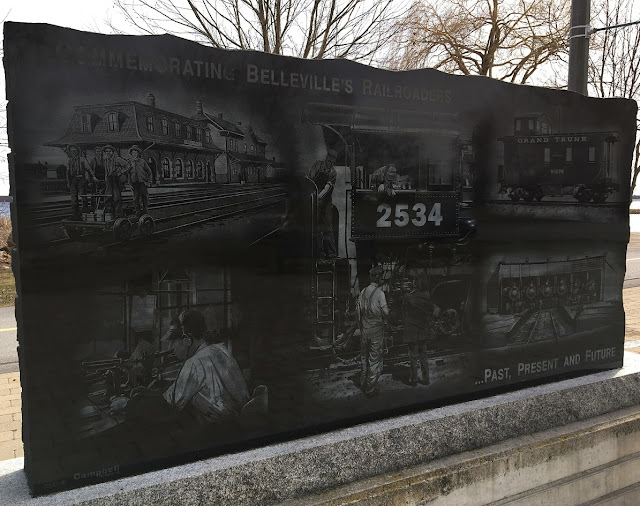The Bridge Between Belleville and the County
"It is enough to wear the patience of a preacher," wrote one exasperated farmer to the Weekly Intelligencer back in the 1880s.
The writer, a resident of Prince Edward County, was referring to the lengthy waits locals, on both sides of the Bay of Quinte, had to endure for transportation across the water by the only means available at the time -slow moving ferries, which were, in the earlier days, operated by a horse walking the treadmill or using the sail. Steam ferries came in replacing the older carriers, somewhat lightening the misery of the travelers, especially
farmers with their produce laden wagons.
Nick and Helma Mika, authors of the book 'Mosaic of Belleville' referred to the market report of Dec. 29, 1876 in their book to emphasize Belleville's importance as an outlet for farmer's produce in the late nineteenth century. The report said: "The market today was the largest seen in Belleville for many years. Every available ground space on the ground was occupied and Pinnacle Street utilized for farmers' teams. In the inside market the throng was so great that it was difficult to pass through the crowds... "
The Mikas wrote that on a cold, blustery day the farmers from across the Bay had to sit in their wagon waiting for the boat to run three times across the bay and back before they could be accommodated.
It was a problem that caught the attention of a group of well-known businessmen of the day including Thomas Ritchie, Henry Corby, James Brown, George S. Tickell, Uriah Thompson, Charles F. Smith and William Anderson who held the charter for the operation of the steam ferry operating on the bay beginning in 1879. The men formed a company called Bay of Quinte Bridge Company and began to raise funds for building a bridge spanning across the bay in 1887.
Being a privately promoted project, the citizens made generous subscriptions to the capital stock. The total cost of the structure was near the $100,000 mark, a large amount for that time considering money was scarce and material relatively cheap. Belleville was noted to contribute $30,000 for the project while $15,000 was collected from Ameliasburgh Township.
Just four years later, in 1891, the long hoped for bridge across the bay was completed. It was opened for traffic and people on both sides of the Bay of Quinte received the event with great enthusiasm.
Public access to the bridge, however, came with a
price. Toll fees were set up by the company
directors. Children under the age of six were allowed across free of charge.
Their parents walking with them across the newly completed bay bridge between Belleville and Rossmore, however, had to pay a nickle each to take advantage of the new facility. A single horse and wagon was charged 10 cents with five cents for each additional horse. A horse and a rider had to pay 10 cents. A traveler with a wheelbarrow was charged five cents while a special declining rate was in effect for one driving a herd of cattle across the bridge. But over the years, the toll fees were felt to strangle business transactions between the city and the communities in Prince Edward County.
In 1920, the Bay Bridge was bought jointly by the City of Belleville, the County and the provincial government and so became a public utility. Much to the delight of the locals, on July 1,1921, toll fees on the bridge were officially removed.
With modern day volume of motor traffic across the bridge and pleasure boats plying the Bay of Quinte in the 1960s, the aging swing bridge began to be seen as fast becoming outdated.
Apart from frequent traffic tie-ups during the summer boating season, highway engineers discovered that one of the piers of the old bridge was slowly sinking into the mud. Periodical repair work required on the bridge also interrupted traffic flow, and a number of accidents involving highway transports, which collided with the bridge truss work increasingly became a big concern. It was time, area residents agreed, to replace the old bridge.
The actual work on the current bridge started in Dec. 1980. Within two years, on Dec. 4, 1982, it was first opened to traffic.
A marvel in engineering skill, the Norris Whitney Bridge, named after the man who spearheaded the campaign for its construction beginning in 1967 when a study for the project first began gathering momentum, replaced the 90- year-old swing bridge, which was finally closed down in early September of 1982.
You can reach Benzie Sangma at bsangma@cogeco.ca



Comments
Post a Comment